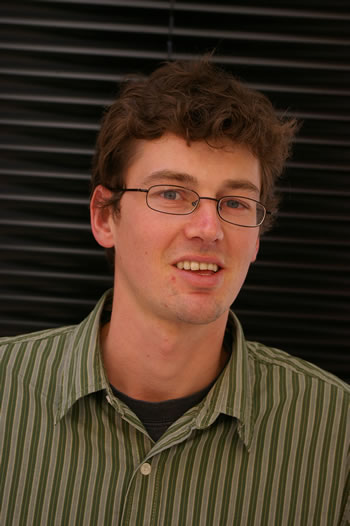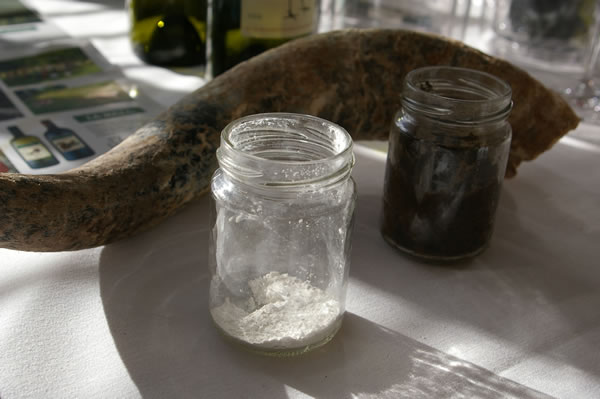|
The
wines of La Raia, Piedmont, Italy
A
biodynamic estate in Gavi
 Gavi
estate La Raia was purchased in 2003 by Giorgio Rossi Cairo, and
it’s now run by his son-in-law, Tom Dean (right), and
Giorgio’s daughter Caterina. Gavi
estate La Raia was purchased in 2003 by Giorgio Rossi Cairo, and
it’s now run by his son-in-law, Tom Dean (right), and
Giorgio’s daughter Caterina.
The 25 hectares of vines are farmed biodynamically,
and have been certified by Demeter from the 2007 harvest after a
period of conversion. I chatted with Tom about the process of running
an estate along biodynamic lines, and tasted the wines.
The conversion period has been five years, from being
conventionally run previously. Some of the vineyards are 60 years old,
and Tom says that it takes time for these to undergo conversion. He
reckons that with vineyards it takes about four or five years of
practising biodynamics to see the effects, although it does depend
where you are starting from.
What were the first steps in making this transition
from conventional to biodynamic growing? ‘It’s all about the
soil’, he maintains. ‘You have to use lighter machinery, do less
work with tractors, more manual work, and add specific things to do
with the life of the soil’. For example, in Autumn they sow mixed
seeds – grasses, legumes and cereals – and then by spring this has
grown into a jungle, so it can be cut and dug into the soil. There’s
a specialized tool that goes on the back of the tractor for this
purpose.
‘Bacteria come into the soil if you create the right
environment’, explains Tom. What he’s trying to do with his soils
is create structure, develop the microbial life and create proper
drainage. One of the plants he grows in the row is rye, which has huge
roots that, once the plant has been cut down, become micro-holes that
help with aeration and drainage.
He composts, but says that compost isn’t as important
for vineyards as it is for other crops because for grape vines you
don’t want soils that are too fertile. As with other biodynamic
growers, Tom uses the special range of preparations to spray on the
vines, add to compost, and spray on the soil. Tom buys most of his
preparations from Calo Norro, although he has also begun to make some
himself.
The greatest challenge in Gavi for biodynamic growers
is powdery mildew, a fungal disease that vines are particularly
susceptible to. Tom dusts the vine leaves with sulphur to combat this.
Once you see mildew appearing, it’s too late to do anything about
it, so you need to start spraying sulphur when the leaves emerge. He
sprays the most badly affected parts of the vineyard with anti-fungal
bacteria, too. Insects aren’t too much of a problem here because
there’s a lot of diversity in the farm, with a wide variety of
different plants growing wildly, helping to make a stable, balanced
ecosystem.
‘The main barrier to biodynamics is a mental one’,
says Tom. ‘Anyone can do it: it requires an open mind and
dedication. You need to start with a bit of faith that it works. After
a while you see it works and it gives you the confidence to carry
on.’

Two
of Tom's biodynamic preparations, in front of a cow's horn
The wines are impressive, with lovely personality.
They’re available in the UK from Vitage Roots, whose prices are
given in brackets.
La Raia Gavi 2006
Cortese is the white grape of Gavi, and I'm quite a fan of it.
Quite bright, slightly herby nose. Refined. Lovely pure, soft-textured
palate with gently herby fruit. Stylish and understated. 88/100 (£7.99
Vintage Roots)
La Raia Gavi 2007
Aromatic, youthful, vividly fruity nose is herby and fresh. The
palate is crisp with nice texture. Fresh style with good acidity.
87/100 (£7.99 Vintage Roots)
La Raia ‘Pisé’ Gavi 2006
From the oldest vineyards. Complex bright lemony, citrussy nose
has lovely aromatics. The palate has a nice rounded texture with pure
bright fruit. Nicely complex with a savoury finish. 89/100 (£9.50
Vintage Roots)
La Raia Barbera 2006
Savoury, assertive cherry fruit nose is bright and fresh. The
palate is savoury and has a hint of earthiness under the fresh bright
fruit. High acidity. 87/100 (£6.99 Vintage Roots)
Wines tasted 03/08
Find
these wines with wine-searcher.com
Back to top
|

